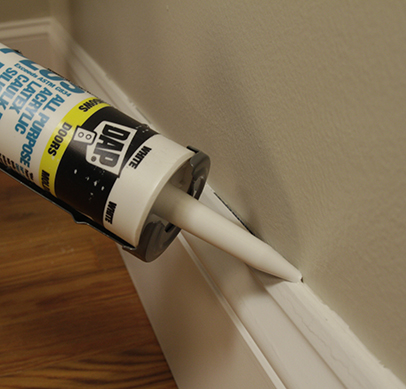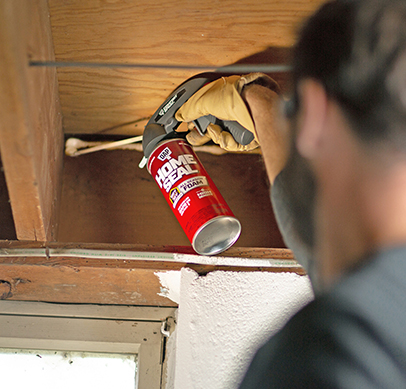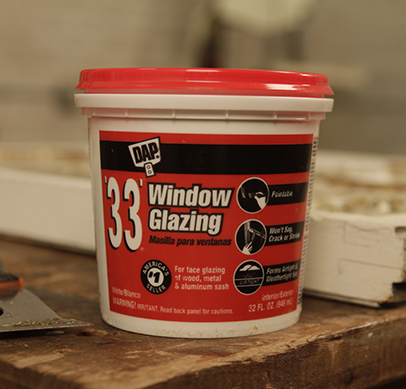
How to Seal and Insulate a Window and Door
Prevent air leaks and help your home be more energy efficient and comfortable with this step-by-step project.

-
How to Seal a Window and Door Step-by-Step
How to Seal a Window and Door Step-by-Step
Tools
- Utility knife
- 3-inch putty knife
- Pry bar
- Pliers
- Caulking gun
- Caulk finishing tool
Your windows and doors have a tough job. As gateways to your home, they need to be properly sealed. Sealing helps you avoid window leaks when it rains. And it allows for better temperature control in your home, as a well-sealed window helps retain heat in winter and cool air in summer. Use this how-to for air sealing windows and doors, both indoors and outdoors.
Indoors:
Step 1: Remove Trim
Remove interior trim around a window or door so you can access the space between the frame and the wall. First, cut through any dried paint along the edge of the trim with a utility knife. Then slide a flexible 3-inch putty knife behind the trim by a nail and pry out slightly. With the knife in place, wedge in a pry bar and pry the trim out an inch. If it seems as if the trim is about to crack, insert a second putty knife between the pry bar and the trim. Move to the next nail and repeat. Continue prying out the trim a little at a time down its length. Then go back to the beginning and pull the trim off.

BONUS TIP: You’ll need to use new nails when you reinstall the trim. To remove the old nails, don’t pull them back through the front of the trim. They might splinter the wood. Instead, pull them through the back using pliers. Use just enough pressure to pull the nails to avoid cutting them off. If one breaks off, use nippers to cut it as close as possible to the wood and leave it. That nub will just bury itself in the drywall when you reinstall the trim.
Step 2: Remove Insulation
Pull out any loose insulation that may be in the gap between the wall and the frame.
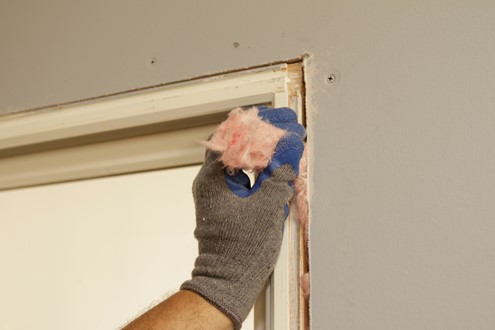
Step 3: Add New Insulation
Apply DAP Touch ‘n Seal No-Warp Foam in the gap. The insulating sealant fills both small and large gaps. Because the foam exerts very little pressure when curing, it won’t bow or warp windows. Make sure the surface is clean of debris. Shake the can. Then, holding it upside down, slowly pull the trigger to release the foam. The foam will expand to fill the gap, so fill it no more than 1/3 full.

BONUS TIP: Don’t try to wipe away any foam that gets on surrounding surfaces. Simply let it dry and then carefully scrape if off. If it gets on your skin, don’t try to wash it off (water accelerates curing). Wipe it off with a dry cloth.
Step 4: Remove Excess Sealant
After the foam has dried, use a utility knife to slice off any excess. Then reattach the trim.
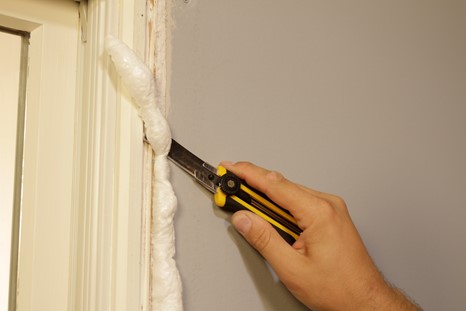
Step 5: Seal Gaps
Clean out any debris in the gaps between the trim and the wall. Use DAP Alex Flex Premium Molding & Trim Sealant to fill and seal any gaps and cracks. It’s easy to apply and tool, low in odor, cleans up with water and is paintable in just 30 minutes. Cut the cartridge nozzle at a 45-degree angle to the desired bead size. Insert the cartridge into a caulk gun. Slowly squeeze the trigger to fill the gap with sealant. Tool the bead immediately, if needed, with a finishing tool.
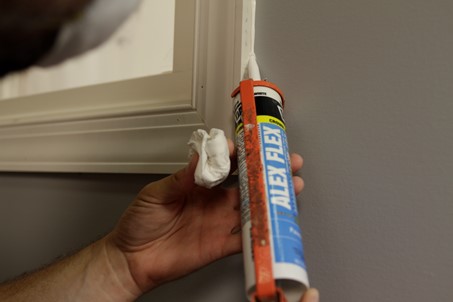
If you're outdoors, also do these steps:
Step 6: Inspect Gaps
Remove any old sealant between trim and siding. Clean out dirt and debris from the areas to be sealed so the sealant will adhere properly to the surfaces. Inspect the gaps: They should not exceed 2 inches wide by ½ inch deep. If the joint is deeper than ½ inch, insert foam backer rod into the gap before applying the sealant.
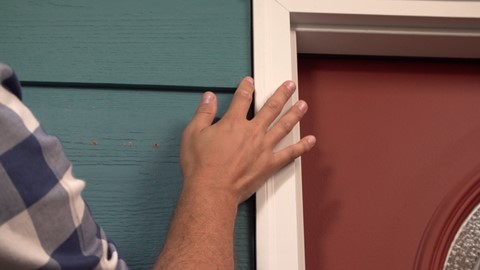
Step 7: Apply New Sealant
Fill gaps with DAP Dynaflex Ultra Advanced Exterior Sealant. The product, commonly used to seal windows for all seasons, is rain- and paint-ready in just one hour. It not only improves productivity but also offers lifetime mold-, mildew- and algae-resistance, so the sealant stays looking clean and new. Cut the nozzle of the cartridge at a 45-degree angle at the desired bead size. Load the cartridge into a caulk gun and squeeze the trigger, using steady pressure as you move along.
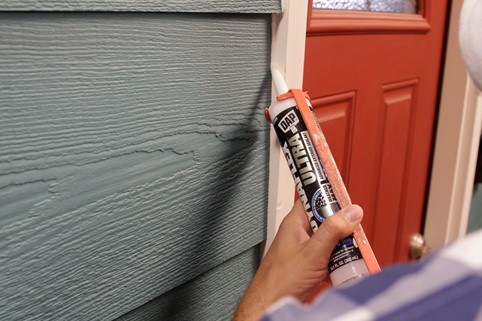
Step 8: Clean Up and Paint
Clean up any excess sealant from surfaces with a damp cloth. No need for solvents or mineral spirits. Paint in just one hour with latex or oil-based paints.
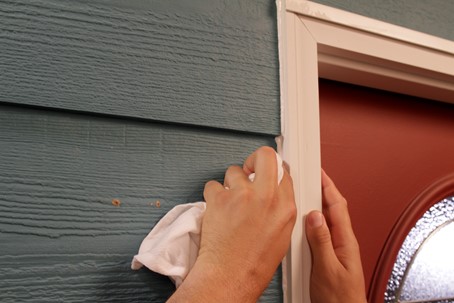
-
Recommended Products
Product Recommendations
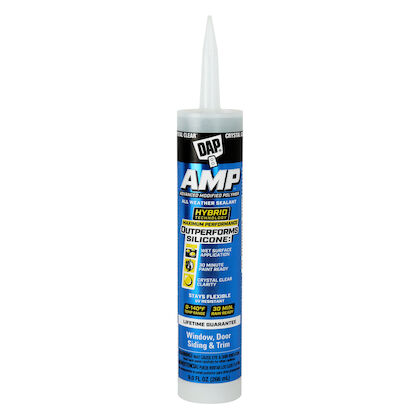
DAP AMP Advanced Waterproof Window Sealant
Get unbeatable protection with AMP Advanced Waterproof Window Sealant. 100% weatherproof, paint-ready in 30 mins, ASTM C920 Class 35. Interior/exterior use.
View Product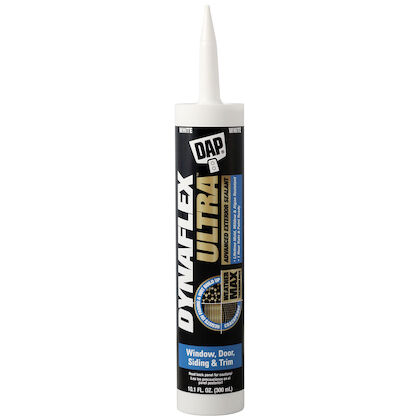
DAP Dynaflex Ultra Exterior Sealant
DAP Dynaflex Ultra Exterior Sealant uses Weather Max Technology for all-weather protection, resisting UV, mold, mildew, and offering a waterproof seal.
View Product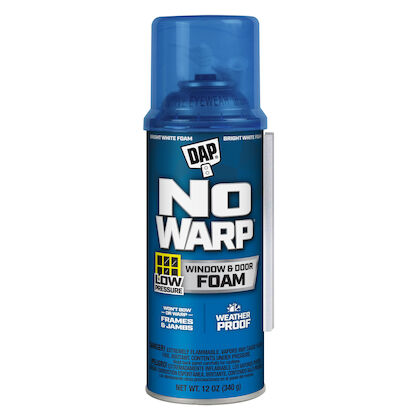
No Warp® Window & Door Sealant
One-component expanding polyurethane foam sealant that dispenses a low pressure/low curing force formula guaranteed to not warp or bow window or door frames and jambs.
View Product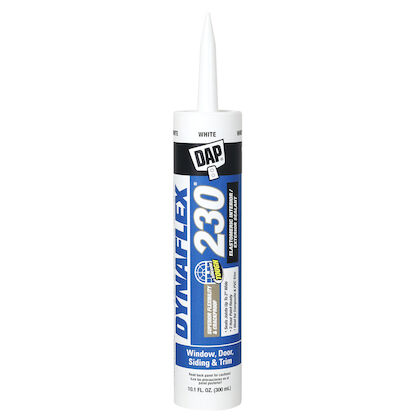
DAP Dynaflex 230 Sealant
Premium waterproof sealant for windows, doors, siding, and trim. Durable, flexible, paintable, low odor. Ideal for indoor/outdoor use.
View Product -
Related Projects
Related Projects
![]()
Choosing the Right Caulk or Sealant
Use this guide to help you find the right caulk or sealant for the most common home projects.
Read More![home seal]()
How to Winterize Your Home
Ready for that cold snap? Here’s how to make your home more comfortable and energy efficient—and maybe even save you some money.
Read More![]()
How to Insulate Your Rim Joists and Stud Wall Cavities
Want to make your home more energy efficient? Try one of the most effective methods: insulating with spray foam.
Read More![]()
How to Glaze Windows
Restoring wood windows (and metal ones, too) can be as easy as replacing cracked window putty. Just follow these steps.
Read More

 USA - EN
USA - EN Canada - EN
Canada - EN